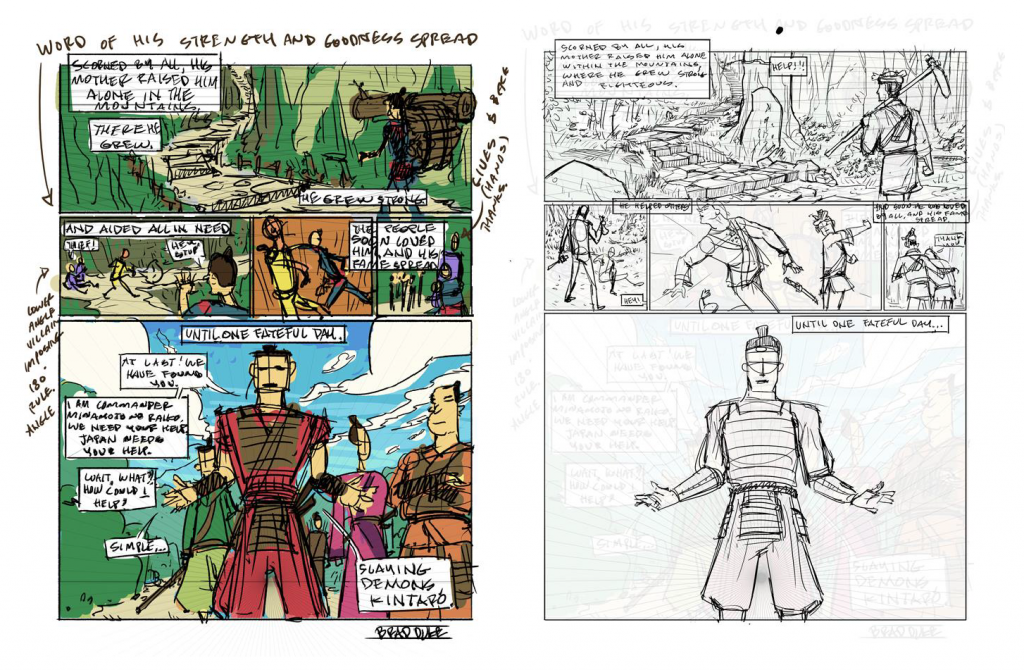Bradley Duke and Justin Kunz, Illustration
Alongside my mentor, I have been working to create an illustrated collection of Japanese stories. Originally, I had a team of 5 BYU students, that were to select a story, research it, and develop it into a cohesive and beautiful volume; we were also working with the Japanese Department so we could collaborate with the Kyoto University of Art and Design. Unfortunately, we were unable to collaborate with the Japanese University, and we had to narrow the project scope.
Currently, I am working with my mentor to create a single graphic novel volume, illustrating Japan’s most famous folktale, Shuten Doji. This project is ongoing, and will be completed on February 4th, when it will be put on display in the Harris Fine Art Center gallery. The 10 page graphic novel, preliminary sketches, study paintings, and photo reference I took will be on display for 2 weeks. Afterward, the Japanese Department will be able to use it in their language instruction locally, and internationally.
In order to illustrate this story, I needed a deeper knowledge of Japanese folklore, and it’s specific visual and literary motifs and symbols. Just going to Japan, taking pictures, and drawing were not enough. To achieve this, I read and studied four books on the subject.1 These books gave me the necessary knowledge to fill the story with the accurate clothing, actions, symbols, and culture to make it feel, and look, like a true Japanese folktale.
At the same time, I studied from various art related books2, recommended by my mentor, that would provide me the necessary knowledge to create a compelling visual narrative. My mentor helped me to effectively study these volumes, practice the principles taught, and apply them in creating the graphic novel.
During Fall Semester, I studied, and emulated various prominent comic book artists, as directed by my mentor. I was given critical feedback that helped me to understand those artists, and how they achieved what they did. During these studies, I was able to learn about American, European and Japanese comic artists and their various styles, giving me a far greater understanding of the current market, and allowing me to become more like a professional artist.
This out of class collaboration with my mentor has enhanced my learning and provided instruction beyond standard classroom work. It has enlarged my creative talents, increased my visual competency, and taught me how to create a large visual narrative independently, and how to work through unexpected problems. I have also learned how to create a marketable visual product, preparing me for my professional career.

On the left is a rough sketch, and rough color compositional drawing.
On the right is a second drawing pass. Next, I will complete the final inking stage, and the final coloring stage.
- Japanese Demon Lore, by Noriko Reider, Kojiki, an ancient religious text, Japanese Folklore, by Frederick Starr, and Folktales from the Japanese Countryside, by Hiroko Fujita.
- Framed Ink, by Marcos Mateu-Mestre, How to Draw: Drawing and Sketching Objects and Environments from your Imagination, by Scott Robertson, Imaginative Realism, by James Gurney, and Creative Illustration, by Andrew Loomis
